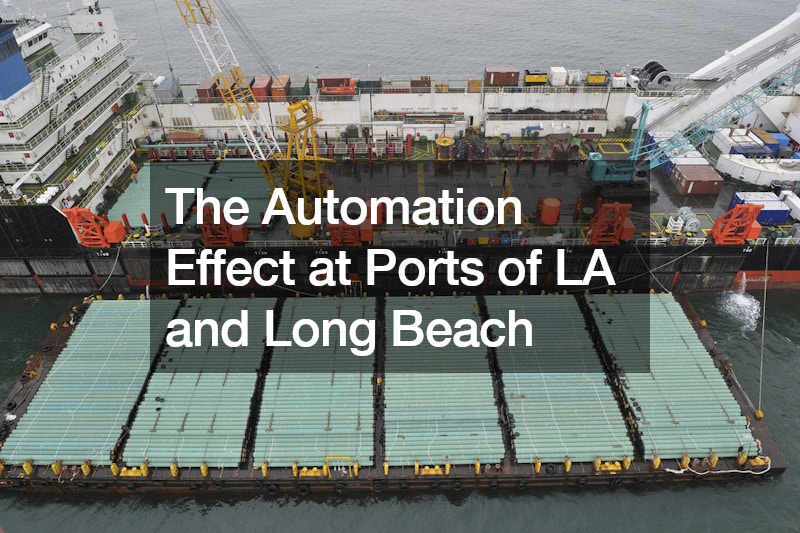
Automation is revolutionizing operations at the Ports of Los Angeles (LA) and Long Beach, ushering in efficiency, scalability, and sustainability to handle increasing cargo volumes and meet evolving industry demands. Port automation technologies, including robotic cranes, automated guided vehicles (AGVs), and smart infrastructure, streamline port operations, enhance productivity, and reduce operational costs, transforming the maritime industry landscape.
The implementation of port automation systems enables ports to optimize container handling processes, minimize human error, and increase throughput capacity to accommodate larger vessels and growing trade volumes. Advanced robotic technologies and AI-driven algorithms enable precise and consistent container movement, stacking, and sorting, reducing turnaround times and enhancing cargo handling efficiency and reliability.
Incorporating automation into port operations also improves safety by minimizing manual labor, reducing accidents, and creating a safer and more secure working environment for port personnel and stakeholders. Automated systems and digital platforms facilitate real-time monitoring, data analytics, and predictive maintenance, empowering port operators to make informed decisions, optimize resource allocation, and proactively address operational challenges and performance bottlenecks.
Port automation initiatives at the Ports of LA and Long Beach demonstrate a commitment to innovation, sustainability, and future readiness, positioning them as global leaders in maritime trade, logistics, and supply chain management. Embracing port automation technologies and digital transformation strategies enables ports to adapt to market dynamics, capitalize on growth opportunities, and sustain long-term competitiveness in a rapidly evolving and increasingly interconnected global trade environment.

